




When it comes to washing shoes, selecting the right setting is crucial to maintaining their quality and extending their lifespan. The wrong setting can cause damage to the shoes or leave them looking worse than they did before. In this ultimate guide, we will explore everything you need to know about choosing the right setting to wash your shoes effectively.
Step 1: Know the Material
Before selecting a wash setting, it is important to determine the material of your shoes. Different materials require different treatment. For instance, leather shoes should never be washed in a machine, while canvas or mesh shoes can typically handle a gentle cycle. It is essential to check the care labels or manufacturer’s instructions for the recommended cleaning method.
Step 2: Consider the Shoe Construction
Another important aspect to consider is the shoe construction. Some shoes, such as those with glued soles or delicate embellishments, may not be suitable for machine washing. Additionally, shoes with removable insoles or orthotics should be taken out before washing to prevent damage. Take note of any unique features or characteristics of your shoes and adjust the washing setting accordingly.
Step 3: Choose the Right Cycle
Once you have identified the material and construction of your shoes, it is time to choose the right washing cycle. Most washing machines offer a variety of settings, such as delicate, normal, or hand wash cycles. For delicate materials or shoes with specific cleaning instructions, opt for a gentle or hand wash cycle. This will help to minimize the potential for damage.
Remember, it is always better to err on the side of caution and choose a gentler setting if you are unsure. You can always rewash the shoes if necessary, but fixing damage caused by an incorrect setting can be more difficult.
By following these simple steps and considering the material, construction, and washing cycle, you can ensure that your shoes are cleaned effectively without compromising their quality or durability. Taking the time to choose the right setting will help to maintain the appearance and condition of your shoes, allowing you to enjoy them for years to come.
Ultimate Guide: How to Choose the Right Setting to Wash Shoes
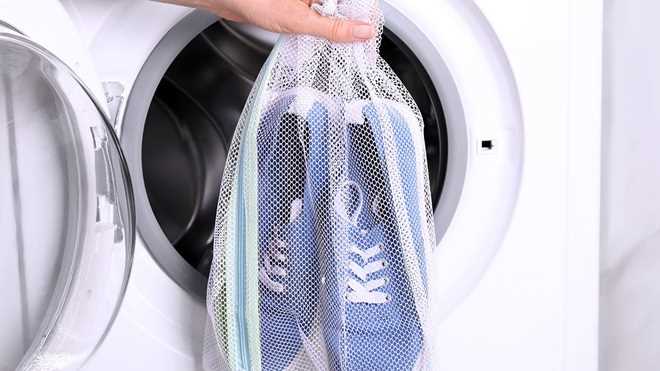
When it comes to washing shoes in the washing machine, choosing the right setting is crucial to prevent damage to your shoes and the machine itself. By following these simple steps, you can ensure that your shoes come out clean and unharmed.
Step 1: Read the Shoe Care Label
Before throwing your shoes into the washing machine, check the shoe care label. Some shoes may not be machine washable at all, or they may require specific settings to maintain their condition. Always follow the guidelines provided by the manufacturer to avoid causing any damage.
Step 2: Remove Insoles and Laces
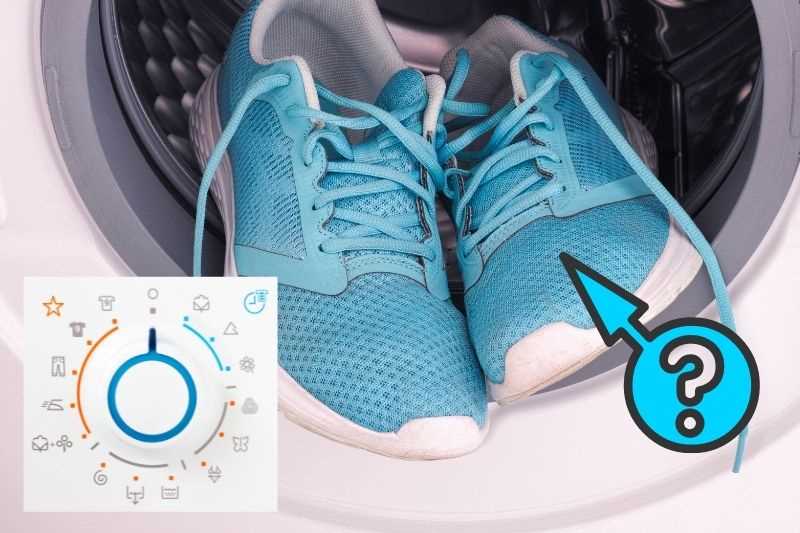
Before washing your shoes, take out the insoles and laces. This will help to prevent tangling during the wash and will allow for more effective cleaning.
Step 3: Choose the Right Setting
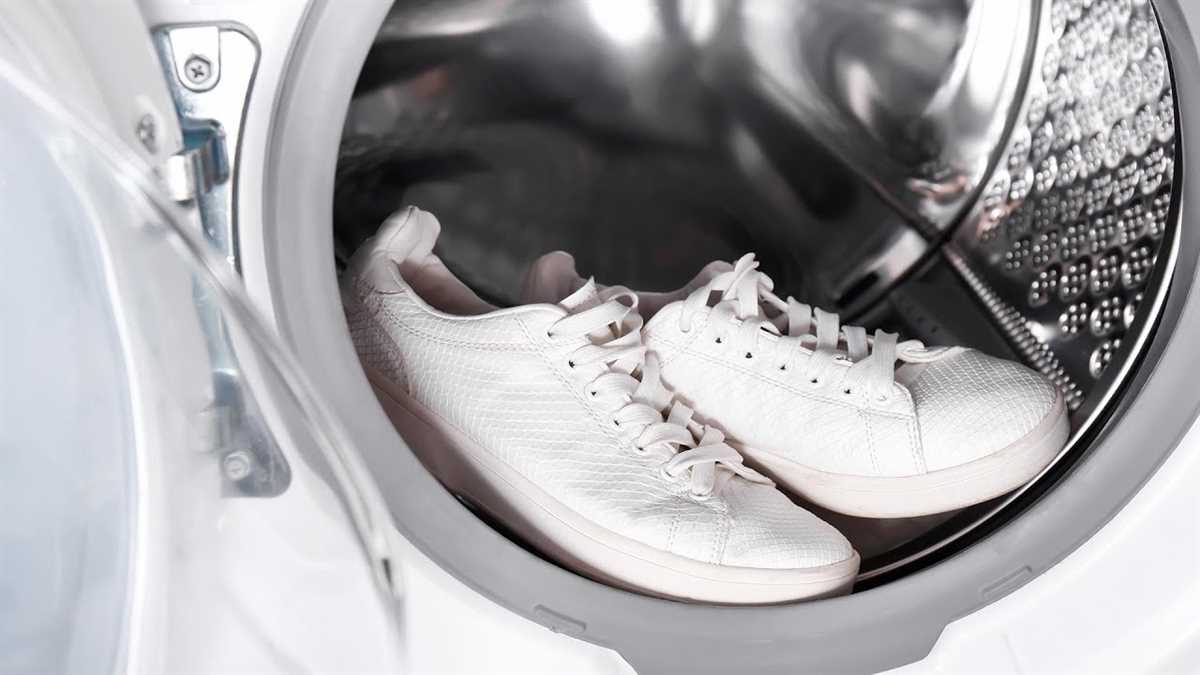
Most washing machines have settings specifically designed for shoes or delicate items. These settings typically use a gentler washing action and lower spin speed. If your washing machine doesn’t have a specific shoe setting, opt for a delicate or hand wash setting instead. Avoid using high heat or long cycles, as these can cause damage to the shoes.
Step 4: Use a Gentle Detergent
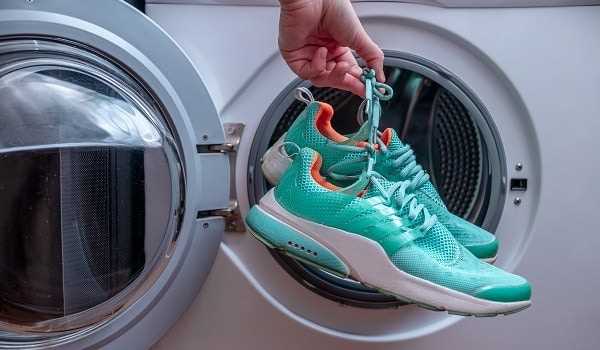
When washing shoes, it is best to use a gentle detergent specifically formulated for delicate items. Avoid using harsh detergents or bleach, as these can cause discoloration or damage to the shoe’s material.
Step 5: Place the Shoes in a Mesh Bag
To protect your shoes from excessive tumbling, place them in a mesh laundry bag or pillowcase. This will prevent them from getting caught in the washing machine’s agitator or other moving parts.
Step 6: Start the Wash
Once you have selected the appropriate settings and added the detergent, start the wash cycle. Keep an eye on the machine throughout the process to ensure that everything is going smoothly.
Step 7: Air Dry
After the wash cycle is complete, it is important to air dry your shoes instead of using a dryer. Direct heat can cause the shoes to lose their shape or shrink. Let them dry naturally in a well-ventilated area, away from direct sunlight.
By following these steps and choosing the right setting to wash shoes, you can keep them clean without causing any damage. Remember to always check the shoe care label and follow the manufacturer’s instructions for best results.
Factors to Consider when Choosing the Right Setting
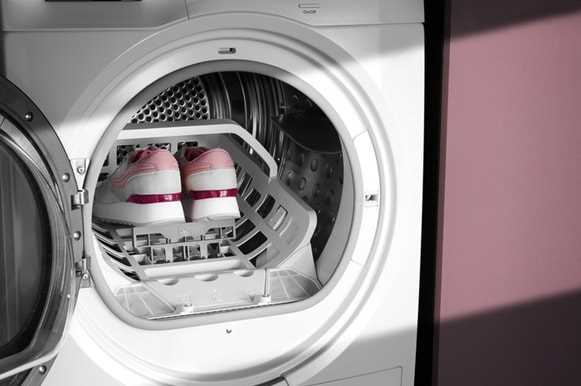
When it comes to washing shoes, selecting the right setting on your washing machine is crucial to ensure they are cleaned effectively without causing any damage. Here are some factors to consider when choosing the right setting:
- Material: Different materials require different washing settings. For example, delicate fabrics like silk or satin should be washed on a gentle or hand wash setting, while sturdier materials like canvas or leather can withstand a regular or heavy-duty cycle.
- Dirt and Stains: The level of dirt and stains on your shoes will also determine the appropriate washing setting. For lightly soiled shoes, a normal or gentle cycle can be used, but for heavily soiled shoes, a heavy-duty or pre-soak cycle may be necessary.
- Water Temperature: The water temperature is another important factor to consider. Hot water is effective in removing dirt and stains, but it can cause shrinking or fading of certain materials. Cold or lukewarm water is generally safe for most shoes.
- Agitation Level: The agitation level refers to the intensity of the washing machine’s movement. Some shoes may require a gentle or delicate cycle with minimal agitation to avoid damage, while others can handle a more vigorous cycle.
- Additional Features: Some washing machines offer additional features such as a specific shoe wash setting or a delicate wash cycle for shoes. These features can be helpful in ensuring the proper care and cleaning of your shoes.
It is important to read the manufacturer’s instructions for your shoes and washing machine to determine the recommended settings. Additionally, always remove any laces or inserts before washing and place the shoes in a mesh laundry bag to protect them from getting tangled or damaged during the wash cycle.
Understanding Different Shoe Materials and their Washing Requirements
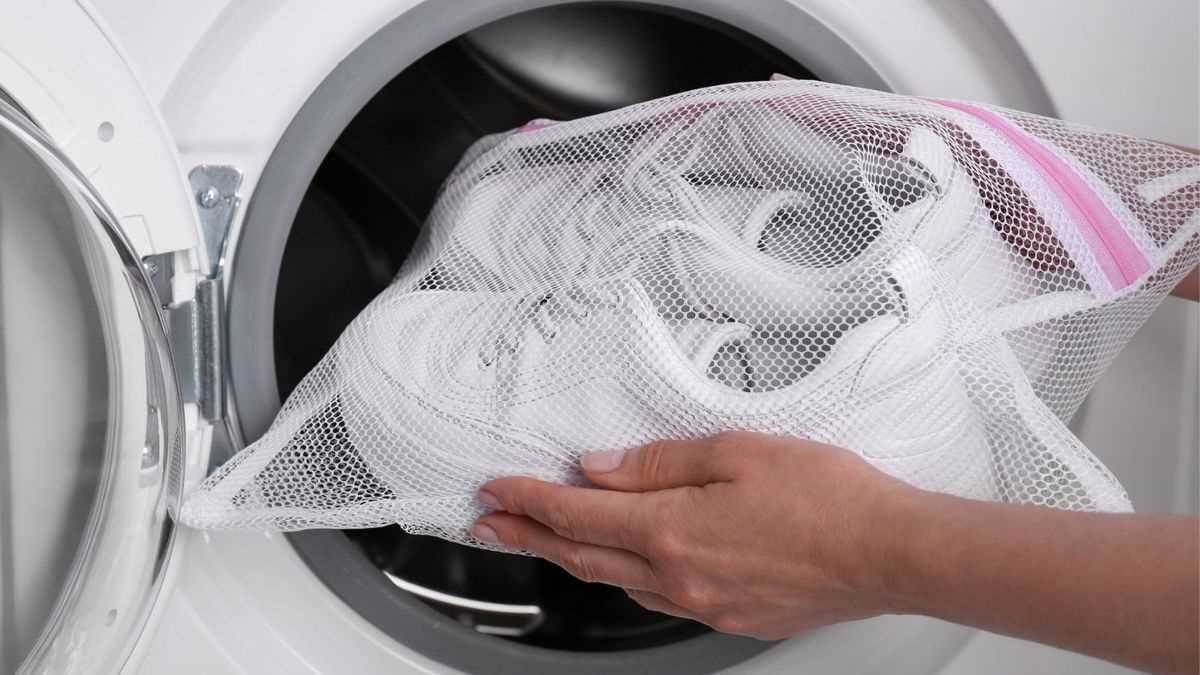
When it comes to washing your shoes, it’s important to understand the material they are made of. Different materials require different cleaning techniques and settings in order to ensure that your shoes are washed properly without getting damaged. Here are some common shoe materials and their washing requirements:
Leather
- Before washing leather shoes, remove any dirt or debris on the surface using a soft brush or cloth.
- Use a small amount of mild soap mixed with water to gently clean the leather.
- Avoid soaking the shoes in water or washing them in a washing machine, as this can cause the leather to become dry and damaged.
- After cleaning, wipe the shoes with a clean, dry cloth and allow them to air dry.
- Apply a leather conditioner or polish to keep the leather soft and supple.
Canvas
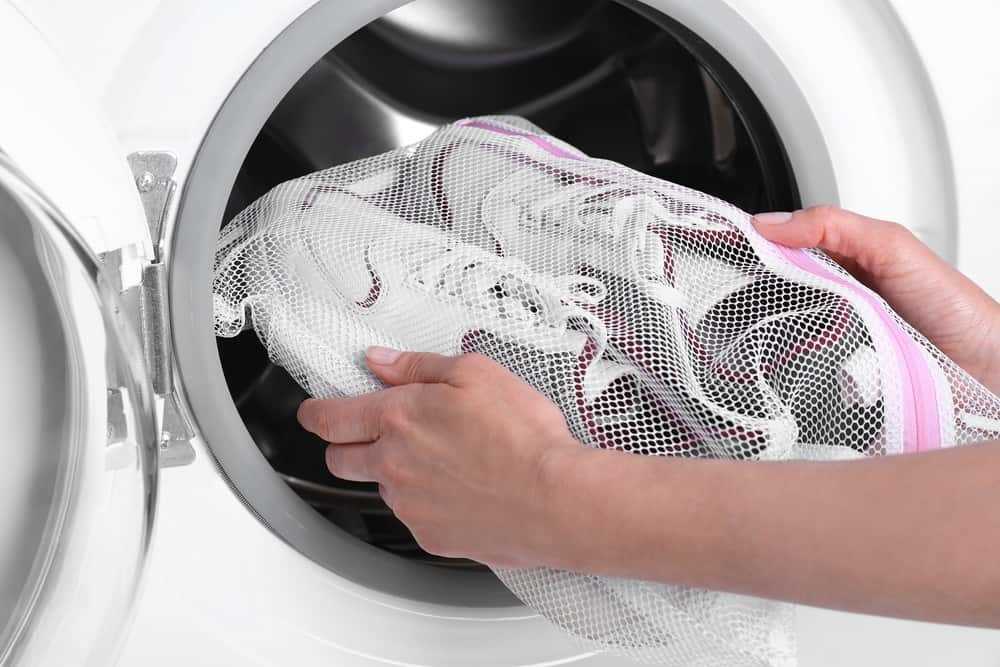
- Remove any excess dirt or mud from canvas shoes by using a soft brush or cloth.
- Fill a basin with warm water and add a small amount of mild detergent.
- Gently scrub the canvas shoes using a soft brush or cloth.
- Rinse the shoes with clean water to remove any soap residue.
- Air dry the shoes naturally, away from direct heat sources.
- If needed, you can use a fabric spray or freshener to remove any odors.
Suede
- Before washing suede shoes, use a suede brush or soft cloth to remove any dirt or stains.
- For light stains, you can use a suede eraser or a mixture of white vinegar and water.
- Gently rub the affected areas with the eraser or sponge soaked in the vinegar solution.
- Wipe the shoes with a clean, dry cloth and allow them to air dry.
- Use a suede brush to restore the nap of the suede after it has dried.
Mesh
- Remove any loose dirt or debris from mesh shoes by tapping them together.
- Fill a basin with warm water and add a small amount of mild detergent.
- Submerge the shoes in the soapy water and gently agitate to remove any dirt.
- Rinse the shoes with clean water to remove any soap residue.
- Place the shoes in a well-ventilated area and allow them to air dry.
It’s important to always check the manufacturer’s instructions or care label before washing your shoes, as certain materials may have specific cleaning requirements. By following the appropriate washing techniques for each shoe material, you can keep your shoes clean and well-maintained for longer.
Recommended Washing Settings for Common Shoe Types
-
Athletic Shoes
- Remove the laces and insoles before washing.
- Place the shoes and laces in a mesh laundry bag to protect them during the wash.
- Use a gentle or delicate cycle with cold water.
- Add a small amount of mild detergent.
- Avoid using bleach or harsh chemicals.
- Air dry the shoes, avoiding direct sunlight or heat sources.
-
Canvas Shoes
- Remove any loose dirt or debris from the shoes.
- Fill a basin or sink with warm water.
- Add a small amount of mild detergent to create a soapy solution.
- Submerge the shoes in the soapy water and use a soft brush to gently scrub any stains.
- Rinse the shoes thoroughly with clean water.
- Wipe away excess water with a clean towel.
- Allow the shoes to air dry.
-
Leather Shoes
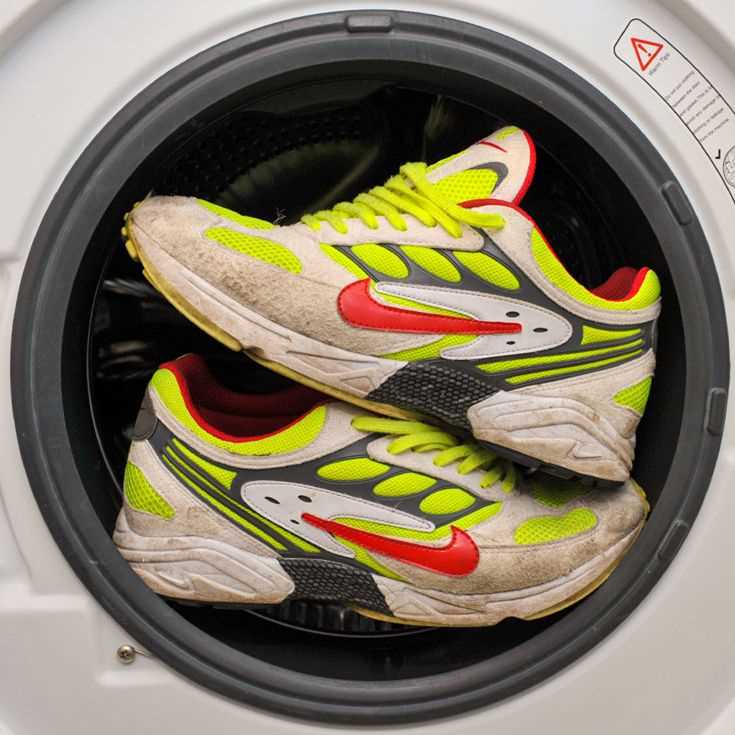 Must-HavePersil Ultimate Liquid Detergent for StainsActive freshness and effective stain removalThis powerful liquid detergent fights tough stains while providing long-lasting freshness, perfect for quick or cold washes. It's gentle enough for sensitive skin, making it a family favorite.
Must-HavePersil Ultimate Liquid Detergent for StainsActive freshness and effective stain removalThis powerful liquid detergent fights tough stains while providing long-lasting freshness, perfect for quick or cold washes. It's gentle enough for sensitive skin, making it a family favorite.- Remove any dirt or debris from the shoes with a soft brush or cloth.
- Use a damp cloth to wipe the shoes, using a mild detergent if necessary.
- Rinse the cloth and wipe away any soap residue.
- Apply a small amount of leather conditioner to a clean cloth or sponge.
- Gently rub the conditioner onto the shoes in a circular motion.
- Allow the shoes to dry naturally.
-
Suede Shoes
- Remove any loose dirt or stains from the shoes with a soft brush or suede eraser.
- Use a suede brush to gently lift the nap of the suede.
- If the shoes are heavily soiled, mix a small amount of mild detergent with water to create a soapy solution.
- Dip a soft cloth or sponge into the soapy solution and gently dab the stained area.
- Rinse the cloth and wipe away any soap residue.
- Stuff the shoes with newspaper or tissue paper to retain their shape and absorb excess moisture.
- Allow the shoes to air dry away from direct sunlight or heat sources.
- Once dry, use a suede brush to restore the nap of the suede.
Tips for Properly Washing Your Shoes
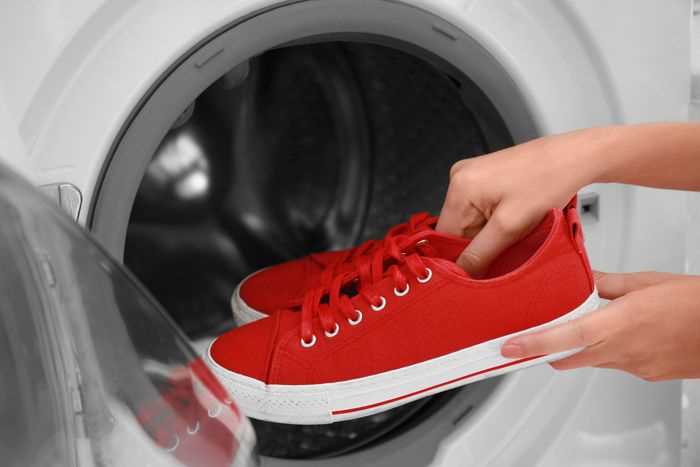
When it comes to washing your shoes, proper care and the right techniques can help preserve their quality and longevity. Here are some tips to help you properly clean your shoes:
- Read the manufacturer’s instructions: Before you start washing your shoes, it’s important to check the manufacturer’s instructions. Different materials and types of shoes may require specific cleaning methods or should not be washed at all. Make sure you follow these guidelines to avoid damaging your shoes.
- Remove the shoelaces and insoles: To properly clean your shoes, it’s recommended to remove the shoelaces and insoles. This will enable you to clean these parts separately and reach every corner of your shoes more effectively.
- Hand wash or machine wash: Depending on the material of your shoes and the manufacturer’s instructions, you can either hand wash them or use a washing machine. If hand washing, use a mild detergent and scrub gently with a brush or sponge. For machine washing, place your shoes in a laundry bag or pillowcase to protect them and use a gentle cycle.
- Air dry: After washing, avoid using a dryer to dry your shoes as it can cause shrinkage or damage. Instead, stuff them with newspaper or cloth to help them retain their shape, and let them air dry in a well-ventilated area away from direct sunlight or heat sources.
- Spot clean for minor stains: If your shoes only have minor stains or dirt, you can spot clean them using a gentle cleaning solution or a mixture of water and mild soap. Use a soft cloth or sponge to apply the solution and gently rub the affected areas. Rinse with clean water and let them air dry.
- Protect the soles: While washing your shoes, pay attention to the soles as well. Scrub them gently with a brush or cloth to remove any dirt or debris. This will help maintain the traction and grip of your shoes.
- Use proper storage: After washing and drying your shoes, store them in a cool, dry place. Avoid placing them near heat sources or in direct sunlight, as this can cause them to fade or deteriorate. Using shoe trees or stuffing them with newspaper can help them retain their shape.
By following these tips, you can ensure that your shoes stay clean and in good condition for longer. Remember to always check the manufacturer’s instructions and be mindful of the specific needs of your shoes.
Common Mistakes to Avoid when Washing Shoes
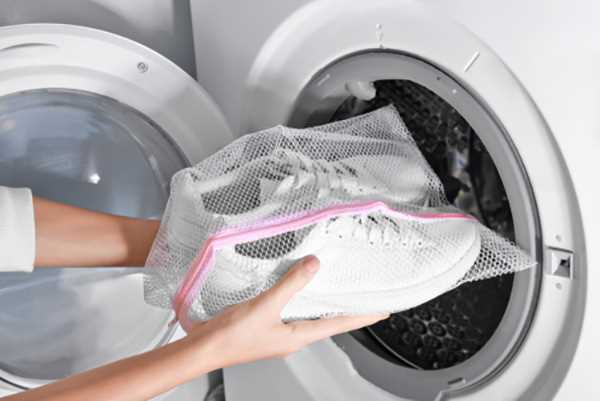
Washing shoes is a delicate process that requires attention to detail and proper care. Avoid these common mistakes to ensure the longevity and cleanliness of your shoes:
- Not checking the manufacturer’s instructions: Different shoe types and materials require specific care. Before washing your shoes, always check the manufacturer’s instructions to ensure you’re using the correct cleaning method.
- Using the wrong cleaning agents: Using harsh chemicals or bleach can damage the fabric and color of your shoes. Stick to mild detergents or shoe cleaning solutions recommended for your specific shoe material.
- Scrubbing too harshly: While it’s important to remove dirt and stains, scrubbing too harshly can damage the shoe material or cause discoloration. Use a soft brush or cloth and gentle motions to avoid any potential damage.
- Not removing laces and inserts: It’s crucial to remove laces and inserts from your shoes before washing. Leaving them in can prevent proper cleaning and may lead to odor or mold build-up.
- Overexposing shoes to water: Some shoes, especially those with certain materials or construction, are not suitable for extended exposure to water. Excessive water exposure can weaken glue, cause shrinking, or misshape the shoes. Follow the recommended guidelines for your shoe type.
- Skipping the drying process: After washing your shoes, it’s important to let them dry properly. Avoid placing them near direct heat sources like radiators or blow dryers, as it can damage the shoe structure. Instead, air dry them at room temperature to maintain their shape and quality.
- Ignoring specialized cleaning methods: Some shoes, such as leather or suede, require specialized cleaning methods. Using the wrong cleaning technique can damage these materials. Research proper cleaning methods for your shoe type or consult professionals if needed.
- Washing shoes too frequently: While keeping your shoes clean is important, washing them too frequently can lead to premature wear and tear. Only wash your shoes when necessary to avoid unnecessary damage.
Avoiding these common mistakes will help you maintain the quality, appearance, and durability of your shoes. Following proper cleaning techniques and guidelines will ensure that your beloved footwear stays in excellent condition for a long time.
FAQ
What are the different settings to wash shoes?
When washing shoes in a washing machine, you can choose from different settings such as delicate, gentle, or hand wash. Each setting has its own level of agitation and water temperature, so it is important to select the right one based on the material and condition of the shoes.
How do I know which setting to choose for my shoes?
To choose the right setting for your shoes, you should first check the care label or manufacturer’s instructions. If there is no specific guidance, you can consider the material and condition of the shoes. Delicate or gentle settings are generally suitable for shoes made of delicate or sensitive materials, while hand wash or low agitation settings work well for shoes that are heavily soiled or have tough stains.
Can I wash my sneakers in a regular washing machine cycle?
It is generally not recommended to wash sneakers in a regular washing machine cycle, especially if they are made of delicate or sensitive materials. Regular cycles may be too harsh and can cause damage to the shoes, such as loosening of glue or deformation. It is best to use the appropriate setting like delicate or gentle, or consider hand washing for better results and preservation of the shoes.
What should I do if my shoes are heavily soiled?
If your shoes are heavily soiled, it is recommended to pre-treat any stains or dirt before washing them. You can gently scrub the stains using a soft brush and a mild detergent. After pre-treating, choose a setting with higher agitation and warmer water temperature for better cleaning. If the shoes are still not clean after one wash, you can repeat the process or consider hand washing.
Is it safe to wash all types of shoes in a washing machine?
No, it is not safe to wash all types of shoes in a washing machine. Shoes made of delicate or sensitive materials such as leather, suede, or satin may get damaged or lose their shape in a washing machine. It is important to check the care label or manufacturer’s instructions before washing. If the shoes are not suitable for machine washing, you can try spot cleaning or professional shoe cleaning methods.
What are some factors to consider when choosing the right setting to wash shoes?
When choosing the right setting to wash shoes, there are a few factors to consider. First, you need to check the material of your shoes. Some shoes may be more delicate and require a gentle cycle, while others can withstand a more heavy-duty setting. You also need to consider the level of dirt and stains on your shoes. If they are heavily soiled, a more intensive setting may be necessary. Finally, consider the age and condition of your shoes. Older shoes or those in poor condition may require a more delicate approach.
Can I wash all types of shoes in a washing machine?
While many types of shoes can be washed in a washing machine, not all shoes are suitable for this cleaning method. Shoes made of delicate materials, such as leather or suede, should not be washed in a washing machine as it can damage the material. Additionally, shoes with embellishments or glued-on parts may not hold up well in the machine. It is important to check the care instructions provided by the manufacturer and use your discretion when deciding whether to wash a particular pair of shoes in the machine.














